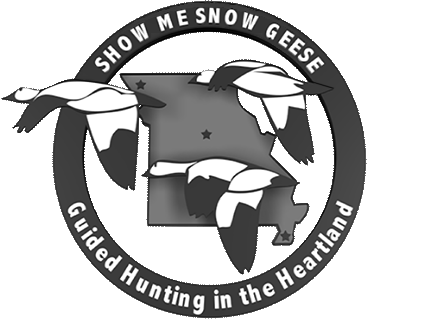 The Missouri Speck, or "Specklebelly," is common names for the Lessor white-fronted goose. More than 700,000 of the birds journey down from breeding grounds in Alaska and Canada in late October and November.
The Missouri Speck, or "Specklebelly," is common names for the Lessor white-fronted goose. More than 700,000 of the birds journey down from breeding grounds in Alaska and Canada in late October and November.
They travel in small flocks throughout the Central and Mississippi flyways, with sightings in Alabama, Mississippi, Oklahoma, and the coastal Atlantic states. Large wintering flocks occur across the agricultural regions and natural wetlands of southeastern Missouri, eastern Arkansas, and Louisiana.
The bird gets its "white-front" moniker from the patches of white directly behind the bill. These medium-sized geese reach up to 6lbs in size, with agile and slender wings. Possibly the most distinctive characteristic of the Missouri Speckelbelly Goose is its melodious, high-pitched cackle that sounds eerily like laughter.
If you're planning on bagging a Specklebelly goose this hunting season, here are ten tips for a successful hunt.
#1 Understanding the Missouri Speck
Specklebellies are more observant and wary of humans than other geese species. This bird has a heightened sense for detecting approaching danger, making them challenging to bring down and a prized variety.
You'll need to learn to use and place the right decoys and invest plenty of time in staging the hunt before the geese arrive in the early morning.
#2 Prepare Before the Season Start
Secure permits or permission to your prime hunting grounds on farms and territories in advance of the season-opening. Private farms require you to layout a well-thought hunting plan if you want to venture onto the land.
#3 Identify Seasonal Movement Patterns
Before you commit to your hunt, scout the land to find the geese's best probable feeding locations. The Missouri Speck is a predictable bird and usually returns to the same places each season. Speak to locals for more information on the best hunting advice on farms throughout your area.
Specklebellies typically keep returning to the same area as long as the food supply remains stable. Rice fields are an excellent choice for planning your hunts. Identify flyways and roosting sites between farms and agricultural areas for the best success.
#4 Select the Best Decoys
You can use the same decoys as you do for snows. Wind sock decoys like the Tanglefree slammer sock is a great decoy that was designed by Show Me Snow Geese guide service. Space the specklebelly goose decoys 10-feet apart to provide the look of a flock that's relaxed and feeding, and closer together when the colder weather arrives. Both Full body and silhouettes such as the V2 specklebelly goose Dive bomb decoy work very effectively.
Missouri Specks like to gather in smaller groups around the edges of snow geese flocks. Position any white-front decoys to imitate this behavior.
#5 Concealment and Positioning
In ground pits, allowing you to sit comfortably at ground level. Pile the dirt on the side of the approaching geese. When the geese drop into the spread, make sure you lean forward using the grain stubble as added concealment, if the pit does not have roof and camouflaged screening.
As the season progresses, add more camouflage to your pit to create a hide, and remember to stay covered up and down when the birds arrive into the spread.
#6 Understanding Calls
The Specklebelly has a unique call, sounding like a group of children laughing at a high pitch. Use both a high-pitch and low-pitch yodel to hail the bird's attention when the flocks come within earshot. Switch to the feeding call as they get closer. Make sure you keep calling until you shoot.
One of the easiest to learn and blow is the Riceland specklebelly goose call with a very lifelike sound; these can be gotten from a low of 80 dollars to a high end custom stabilized wood call at fewer than 200 dollars. .
#7 Stay Downwind
Move your decoys to get birds working upwind to move within range. Avoid using spinning-wing decoys in spreads; the visual of flashing white wings brings up the birds' alert level before the drop.
#8 Find Season Dates Online
The U.S. Fish and Wildlife Service sets bag limits and season dates in the late summer. Contact a branch of the state wildlife agency for a copy of the hunting regulations restrictions and listing of hunting dates.
This is where you may wish to contact a local hunting outfitter to pin point the best dates because it is the hunting season some times the birds may not be their and a local hunting guide will get you in on the best dates to bag that trophy specklebelly goose.
#9 Understand Weather Conditions
Windy, sunny days are ideal hunting conditions for the Missouri Speck. The sun helps to cast shadows, aiding your concealment strategy. The stronger winds keep the birds flying at low altitudes, making them more willing to commit to an early drop.
#10 Enjoy the Meal
This bird is a prize among skilled hunters, with a delectable, mildly-game flavor. Draw and pluck the geese, add your favorite stuffing, and roast for 18 to 20 minutes per-lb 325 degrees. Enjoy the meal.

